Kendamil vs. Bobbie Formula (2025 Comparison Guide)
This post may contain affiliate links. As an Amazon Associate, I earn from qualifying purchases. Please read my disclosure.Trying to decide between Kendamil and Bobbie formula for your baby? I tested both brands with my son when I stopped breastfeeding, and here’s what I learned: Bobbie Organic uses nonfat milk and is easier on sensitive stomachs, while Kendamil uses whole milk for a creamier formula. Both are organic European-style options without palm oil or corn syrup, but they differ in fat blends, texture, and price. Here’s everything you need to know to choose the right one for your baby.
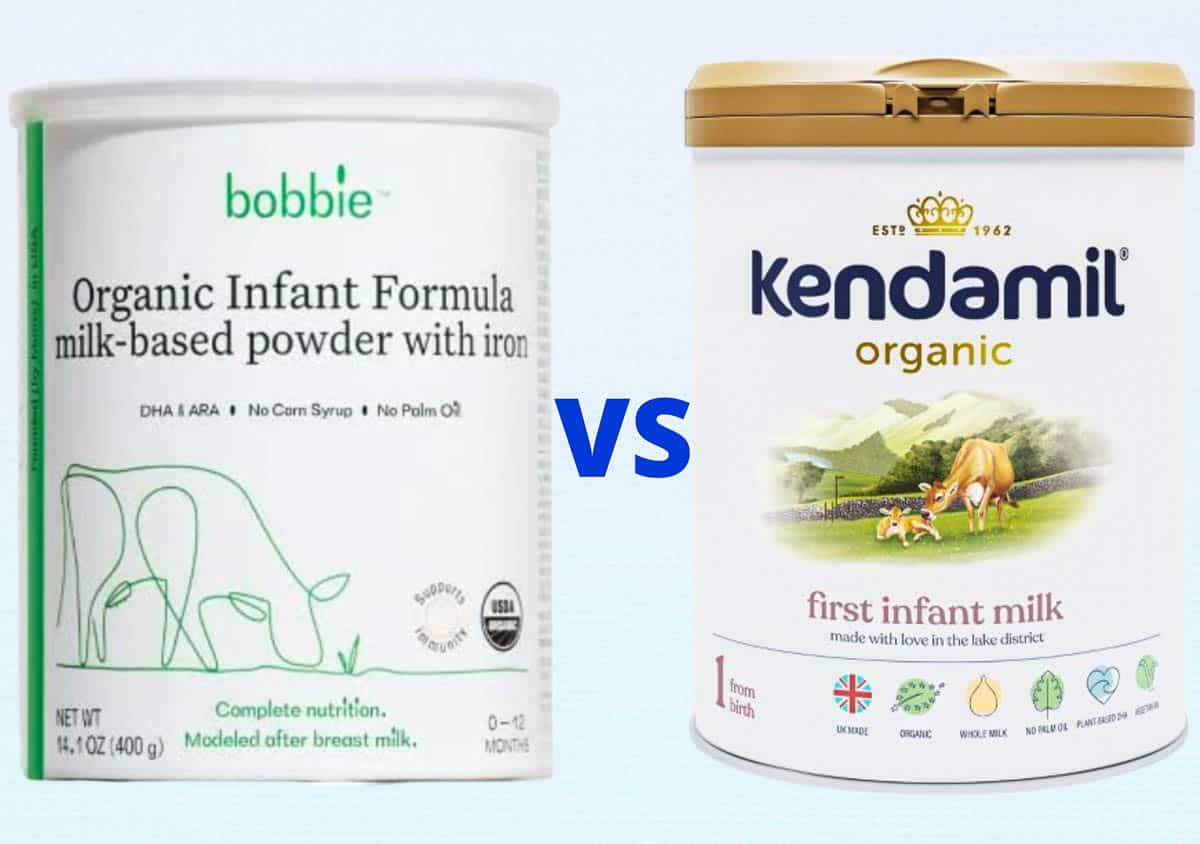
My Formula Journey
While I was able to breastfeed both of my kids, I still needed to supplement with formula because I couldn’t produce as much as they needed to eat. I researched extensively because I wanted organic, lactose-based, and free of palm oil and corn syrup. Two brands kept coming up: Bobbie and Kendamil.
I ordered both and tested them for two weeks, tracking everything from how easily they mixed to how my baby’s stomach handled them. I found that Bobbie’s nonfat milk base was lighter and easier on my baby’s sensitive stomach. Kendamil’s whole milk formula was richer and creamier, but that richness made my younger one spit up more frequently.
I ultimately chose Bobbie for my kids, but I learned that the “best” formula depends entirely on your baby’s individual digestion and needs. Both are excellent organic European-style formulas – they just work differently.
If you’re in a similar position as I was, I’ve created this guide to help you compare the formulas and decide between Bobbie vs. Kendamil for your baby.
Quick Comparison: Bobbie vs. Kendamil At A Glance
| Feature | Bobbie Organic Infant Formula | Bobbie Organic Whole Milk Formula | Kendamil Organic | Kendamil Classic |
|---|---|---|---|---|
| Organic Certification | USDA Organic, EU Organic & Non-GMO | USDA Organic, EU Organic & Non-GMO | USDA & EU Organic & Non-GMO | Not Organic, but is Non-GMO |
| Milk Type | Nonfat milk | Whole milk | Whole milk | Whole milk |
| Whey:Casein Ratio | 60:40 | 60:40 | 60:40 | 60:40 |
| Primary Carb | Organic lactose | Organic lactose | Organic lactose | Lactose |
| DHA Source | Algae 20mg per 100 calories | Algae 20mg per 100 calories | Algae 24mg per 100 calories | Algae 24mg per 100 calories |
| Uses Hexane? | No | No | No | No |
| Contains Palm Oil | No | No | No | No |
| Contains Corn Syrup | No | No | No | No |
| Fat Blend | Low erucic acid rapeseed oil, linoleic sunflower oil, high oleic sunflower oil, coconut oil | Whole milk fat, linoleic sunflower oil, low erucic acid rapeseed oil, high oleic sunflower oil, coconut oil | Whole milk fat, sunflower oil, rapeseed oil, coconut oil | Whole milk fat, sunflower oil, rapeseed oil, coconut oil |
| Contains HMOs/Prebiotics | No | Contains MFGM | Yes (HMOs, GOS) | Yes (HMOs, GOS, FOS) |
| Iron | 1.2mg per 100 cal | 1.2mg per 100 cal | 1mg per 100 cal | 1mg per 100 cal |
| Can Size | 400g (14.1oz) | 400g (14.1oz) | 800g (28.2oz) | 800g (28.2oz) |
| Price Per Ounce | $1.59 via subscription | $1.78 via subscription | $1.42 at Target | $1.21 at Target |
| Made In | USA | USA | UK | UK |
| FDA Approved | Yes | Yes | Yes | Yes |
| Clean Label Certified | Yes | Yes | No | No |
About Bobbie Organic Formula
Bobbie formula was founded in 2018 by two moms, Laura Modi and Sarah Hardy, who struggled to breastfeed exclusively and were frustrated with the organic formula options available in the US at the time. I connected with this story immediately because that’s exactly how I felt when I started looking for formula when my kids were babies.
What sets Bobbie apart is that it’s the only European-style organic formula that’s both manufactured and sold in the United States. It’s made with milk from grass-fed cows on organic farms in Vermont and Ohio (specifically from Organic Valley cooperative farms), and it meets both FDA requirements and European nutritional standards.
All of Bobbie’s formulas are the only infant formulas made in the United States that meet the EU standard for DHA at 20 mg per 100 calories. The DHA is water-extracted from algae rather than synthetically extracted with hexane like many other brands use. This matters because hexane is a chemical solvent, and I preferred knowing that my kids’ formula used a cleaner extraction method.
Bobbie is also the first US formula to receive both the Clean Label Project Purity Award and the Clean Label Pesticide-Free Certification. When I called Bobbie’s customer service to ask about their testing protocols, they spent over 30 minutes walking me through their quality control process. That level of transparency made me trust them even more.
The subscription model was another huge selling point for me. With Bobbie’s subscription, I never had to worry about running out or about formula shortages. The formula I chose for my kids showed up at my door exactly when I needed it. Bobbie is also sold at Target stores nationwide if you ever need a last-minute pickup.
Bobbie currently offers four formulas:
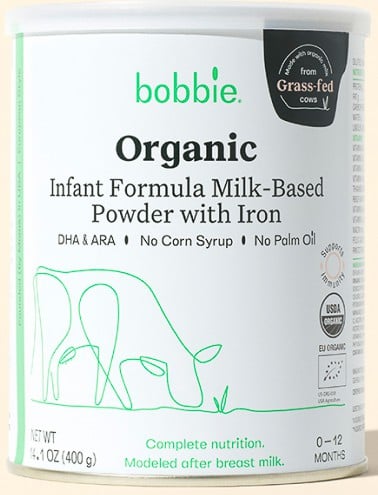
- Made with nonfat milk
- Has a 60:40 whey-to-casein ratio that mimics mature breast milk. This makes it easy on baby’s digestion.
- Uses organic lactose as the only carbohydrate (no corn syrup or maltodextrin),
- Free of palm oil, gluten, antibiotics, and soy allergens.
- DHA is water-extracted from algae rather than synthetically extracted with hexane like many other brands use. This matters because hexane is a chemical solvent, and I preferred knowing that my kids’ formula used a cleaner extraction method.
- Try Bobbie with their starter offer: 50% off your first 24oz can + free shipping
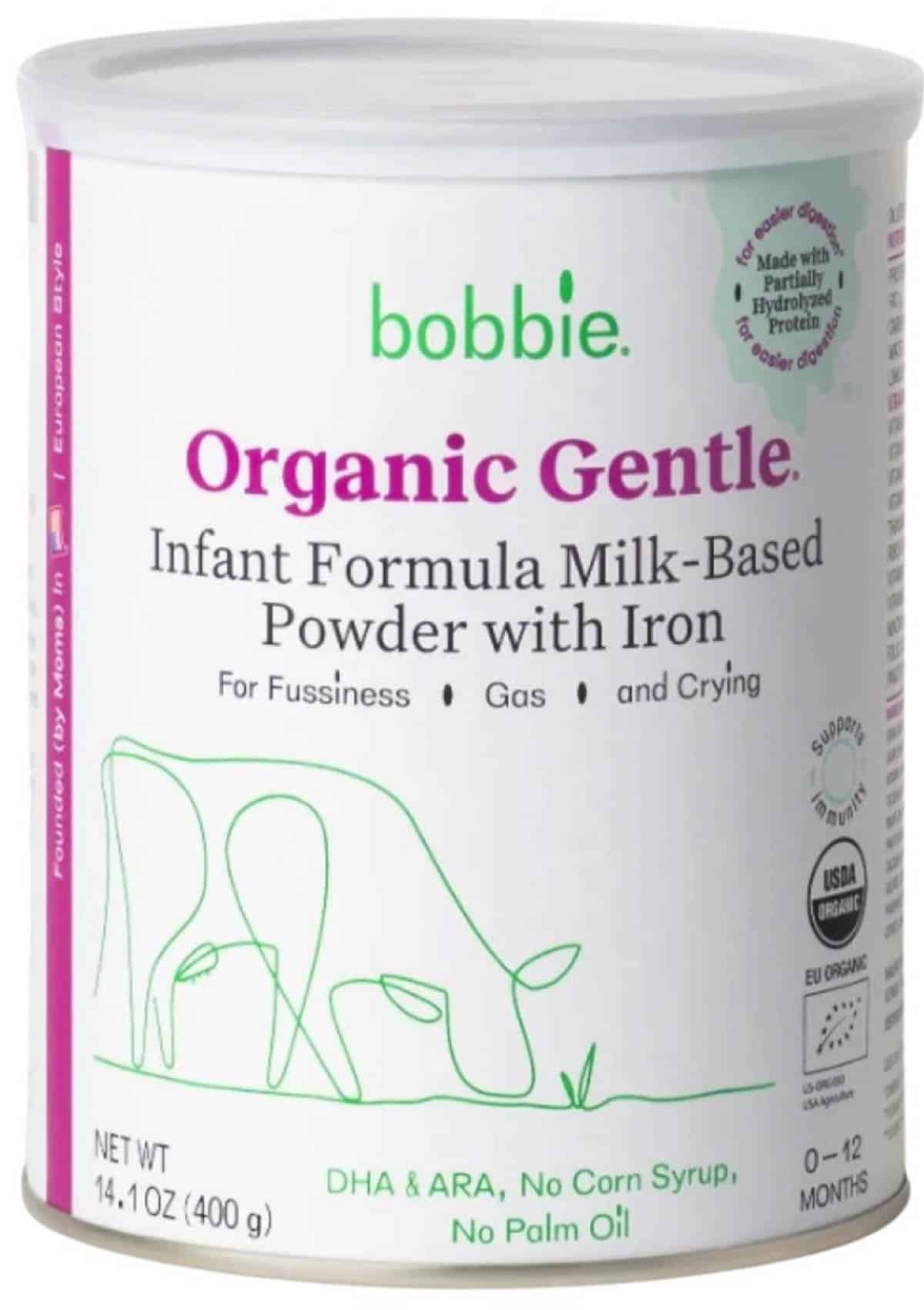
- Made with 100% partially hydrolyzed whey protein, which means the proteins are already partially broken down to make them even easier to digest.
- Specifically designed for babies with sensitive stomachs or those who experience gas and fussiness.
- Made with organic lactose
- Free of palm oil, maltodextrin, gluten, corn syrup, antibiotics, and other problematic ingredients.
Bobbie Organic Whole Milk Infant Formula
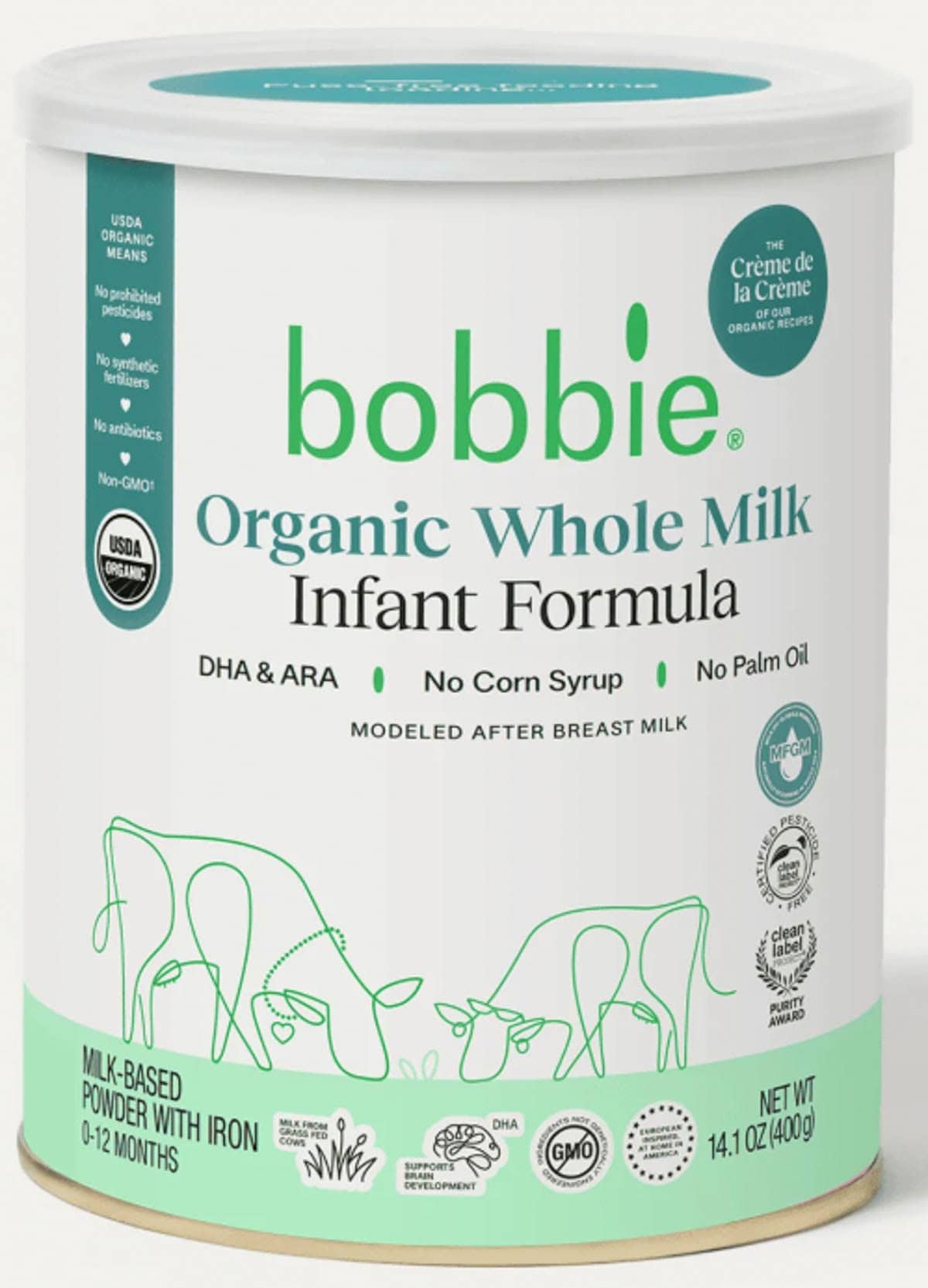
- Bobbie’s newest offering and the first USDA organic whole milk formula manufactured in the US.
- Uses organic grass-fed whole milk as its base, which means it contains natural milk fat and requires fewer added vegetable oils compared to their nonfat milk formula.
- The whole milk also provides naturally-occurring MFGM (milk fat globule membrane), which supports brain development.
- Like all Bobbie formulas, it has a 60:40 whey-to-casein ratio, uses 100% organic lactose as the carbohydrate, and is designed to support softer stools and comfortable digestion.
- Free of palm oil, corn syrup, soy allergens, and meets EU DHA standards at 20 mg per 100 calories.
- In my opinion, this is Bobbie’s closest formula to breast milk yet!
Bobbie Grass-Fed Whole Milk Infant Formula

- Similar to the Organic Whole Milk formula but is not certified organic. This is a more budget-friendly whole milk option compared to the organic version.
- Made with grass-fed whole milk and also contains natural milk fat plus fewer added oils compared to traditional formulas.
- Includes naturally-occurring MFGM from whole milk, DHA, and choline to support brain development, and is designed with a breast milk-inspired fat blend to support softer stools.
- 60:40 whey-to-casein ratio, uses lactose (not organic) as the primary carbohydrate, and is free of palm oil, soy allergens, and alternative sugars.
- It’s Clean Label Project certified and meets FDA requirements.
About Kendamil Baby Formula
Kendamil is a privately-owned British family business that’s been making formula in the UK for over 60 years. The company uses a British supply chain and sources ingredients directly from British farms, which I appreciate because they prioritize locally-sourced ingredients and have transparency about where their ingredients come from.
Kendamil became available in the US market in 2022 as part of Operation Fly Formula, the FDA’s emergency plan to increase formula supply during the shortage. Kendamil has two infant formula varieties that are now available at Target stores and you can also buy Kendamil online through subscription services.
Kendamil offers several varieties, but the two main options available in the US are:
Kendamil Classic Infant Formula is suitable for babies 0-12 months and is made with whole milk from grass-fed cows. It’s not organic, but it’s free of palm oil, corn syrup, and other additives. The formula is certified vegetarian and kosher.
Kendamil Organic Infant Formula is the organic version with the same whole milk base and clean ingredients. It’s also suitable for babies 0-12 months.
In Europe, Kendamil also offers “Classic First Infant Milk Formula” and “Organic First Infant Milk Formula” in stages (Stage 1 for 0-6 months, Stage 2 for 6-12 months, Stage 3 for 12+ months). These European versions are available through subscription services in the US, but they’re not sold in stores. The staging system is designed to adjust nutrition as babies grow, though many pediatricians and parents find the single-stage US versions work just fine for the entire first year.
What makes Kendamil unique is that it’s made with whole milk instead of skim milk. This produces a creamier, richer texture and reduces the amount of vegetable oils needed in the formula since whole milk already contains natural milk fats. The whey-to-casein ratio is 60:40, matching mature breast milk.
All Kendamil formulas contain Human Milk Oligosaccharides (HMOs), which are prebiotics that support gut health and immune function. Bobbie doesn’t contain HMOs, which was one point in Kendamil’s favor when I was comparing the two. However, I later learned that while HMOs are beneficial, they’re not essential, and plenty of babies thrive on formulas without them.
Kendamil also uses plant-based DHA from algae (no fish oil), making it suitable for vegetarian families.
Note: Kendamil also makes a goat milk formula, but I’m only reviewing their cow’s milk formulas in this comparison.
The Key Differences That Actually Matter
When I first started comparing these formulas, I got lost in the technical details. But after trying both, I realized that most of the nutritional differences are minor. Both formulas meet FDA and EU standards for infant nutrition. Both use lactose as the primary carb. Both avoid palm oil and corn syrup. Both have the same whey-to-casein ratio.
The differences that actually affected our day-to-day experience came down to:
- Milk type (whole vs. nonfat) – This impacts digestion, texture, and how rich the formula tastes.
- Fat blend – Different vegetable oils can affect how easily your baby digests the formula.
- HMOs/prebiotics – Kendamil has them, Bobbie doesn’t. Helpful for gut health but not essential.
- Organic certification – Bobbie is USDA organic. Kendamil Organic is EU organic. Kendamil Classic is not organic at all.
- Manufacturing location – Bobbie is made in the US, Kendamil in the UK. This affects availability and consistency of supply.
- Price – Kendamil is generally more affordable, especially the Classic non-organic version.
Let me break down these differences in detail so you can see how they might matter for your baby.
Bobbie Infant Formula vs. Kendamil Classic (Non-Organic)
Since Kendamil Classic is not organic, it’s not an apples-to-apples comparison with Bobbie Organic. But many parents consider Kendamil Classic because it’s more affordable while still being free of palm oil and corn syrup.
The Similarities
- Both meet nutritional standards: Kendamil Classic and Bobbie both meet FDA requirements for infant formula and will provide complete nutrition for babies 0-12 months.
- Both avoid problematic ingredients: Neither contains palm oil, corn syrup, or added sugars. Both use lactose as the primary carbohydrate.
- Both have the same protein ratio: 60:40 whey-to-casein, matching mature breast milk for easier digestion.
- Both contain DHA: Essential omega-3 fatty acid for brain and eye development, extracted from algae.
The Key Differences
Organic certification: This is the biggest difference. Bobbie is USDA certified organic, which means the cows are raised without antibiotics, hormones, or pesticides, and the feed is organic. Kendamil Classic doesn’t have organic certification, so you don’t have the same guarantees about how the cows were raised or what they were fed.
For me, this was a major factor. After going through the effort to feed both my kids organic produce and avoid pesticides in their food (when making baby food), I didn’t want to give either of them non-organic formula. But I understand that organic formulas are more expensive, and not every family can afford the premium. Kendamil Classic is still a quality formula without the worst offenders like palm oil and corn syrup.
Milk Type: Kendamil Classic uses whole milk, while Bobbie’s Original formula uses nonfat milk (Bobbie’s whole milk formula uses whole milk, just like Kendamil). But when comparing Kendamil to Bobbie’s regular infant formula, whole milk makes Kendamil richer and creamier but also harder for some babies to digest.
Fat Blends: Kendamil uses whole milk fat plus sunflower, coconut, and rapeseed oils. Because they start with whole milk, they need less added vegetable oil. Bobbie uses safflower, sunflower, canola, and coconut oils. (Note: As of June 2023, Bobbie removed soy oil from their formulas, so they’re now 100% soy-free.)
HMOs: Kendamil Classic contains Human Milk Oligosaccharides (a type of prebiotic fiber that supports gut health). Bobbie does not. This was appealing to me in theory, but in practice, my son did fine without them.
Clean Label Certification: Bobbie has Clean Label Project Purity Award certification, meaning it’s been tested for hundreds of contaminants including heavy metals, pesticides, and chemicals. Kendamil Classic does not have this certification. This mattered to me after researching heavy metals in baby food and formula.
Price: Kendamil Classic is significantly cheaper at $1.21/oz compared to Bobbie at $1.59/oz (with subscription).
Bobbie Infant Formula vs. Kendamil Organic
This is the fairest comparison since both are certified organic formulas. These were the two options I seriously considered for my baby.
The Similarities
- Both are organic: Bobbie is USDA organic, Kendamil is EU organic. Both certifications ensure no antibiotics, hormones, or pesticides in dairy production. Both use milk from grass-fed, pasture-raised cows.
- Both avoid problematic ingredients: No palm oil, no corn syrup, no added sugars. Both use organic lactose as the primary carbohydrate.
- Both have the same protein ratio: 60:40 whey-to-casein for digestion similar to breast milk.
- Both contain algae-based DHA: No fish oil, making them suitable for vegetarian families.
The Key Differences
Milk Type: This is the most significant practical difference I noticed when using both formulas. Kendamil Organic uses whole milk, which creates a richer, creamier formula that some babies love. Bobbie uses nonfat milk, which makes a lighter formula that’s generally easier to digest.
When I gave my son Kendamil, he seemed satisfied and full, but he also spit up more frequently. With Bobbie, he spit up less and seemed more comfortable after feedings. I later learned from our pediatrician that babies with reflux or sensitive stomachs often do better on nonfat milk formulas because whole milk fats can be harder to digest.
Fat Blends: Kendamil Organic uses whole milk fat plus sunflower, coconut, and rapeseed oils. Bobbie uses safflower, sunflower, canola, and coconut oils. Both fat blends are designed to mimic breast milk’s fatty acid profile, but they’re composed differently because Kendamil starts with whole milk that already contains milk fat.
HMOs: Kendamil Organic contains Human Milk Oligosaccharides (prebiotics). Bobbie does not. HMOs are complex carbohydrates naturally found in breast milk that support gut health and immune function. This was one area where Kendamil had an advantage on paper. However, Ayan’s digestion and overall health were excellent on Bobbie even without HMOs, so I don’t think they’re essential.
Manufacturing Location: Bobbie is made in the United States with milk from Organic Valley farms in Vermont and Ohio. Kendamil is made in the UK with milk from British farms. For me, the US manufacturing was a plus because it meant more reliable availability.
Clean Label Certification: Bobbie has Clean Label Project Purity Award and Pesticide-Free certifications. Kendamil Organic does not. After everything I learned about heavy metals in baby food, third-party testing mattered to me.
Formula Stages: Kendamil offers staged formulas in Europe (though not widely available in US stores). Bobbie has one formula for 0-12 months. I personally found the single-stage approach simpler and didn’t see a need to switch formulas as my kids grew.
Price: Kendamil Organic is slightly cheaper than Bobbie at $1.42/oz compared to Bobbie’s $1.59/oz with subscription.
Which Formula Is Easier To Digest?
This was my biggest concern when choosing a formula for my kids. Both my kids had mild reflux in their first few months, and I wanted a formula that wouldn’t make it worse.
Bobbie’s advantage: The nonfat milk base makes Bobbie lighter and generally easier to digest, especially for babies with sensitive stomachs or reflux. When my son was on Bobbie, his spit-up decreased noticeably compared to when he was on Kendamil. His poops were also more consistent (sorry for the TMI, but this matters when you’re a formula parent!). Bobbie formula reviews from other moms consistently mention that it’s gentle on sensitive stomachs, and my experience matched that reputation.
If your baby needs even more digestive support, Bobbie Organic Gentle uses partially hydrolyzed protein that’s already broken down into smaller pieces. This can reduce gas and fussiness. I didn’t need to use the Gentle formula with my son, but I have friends whose babies thrived on it after struggling with other formulas.
Kendamil’s richness: The whole milk formula in Kendamil creates a richer, creamier texture that some babies absolutely love. A mom in my local parenting group swears her daughter prefers Kendamil because it tastes more like breast milk. However, that same richness can be harder for some babies to digest. Multiple moms in online reviews mentioned their babies had more frequent spit-up or looser stools on Kendamil compared to other formulas.
The HMO factor: Kendamil contains HMOs (prebiotics) which can support gut health and digestion. In theory, this should make Kendamil better for digestion. But in my experience, the whole milk fats outweighed the benefits of the HMOs, and Bobbie’s nonfat formula was ultimately gentler on my son’s stomach.
My takeaway: If your baby has a sensitive stomach, reflux, or frequent spit-up, start with Bobbie. If your baby has a stronger stomach and you want the richness of whole milk, Kendamil might be great. Every baby is different, so this really comes down to trial and observation.
Taste, Texture, and Mixing Comparison
I tasted both formulas myself (yes, really) because I wanted to understand what my son was experiencing. Here’s what I noticed:
Bobbie
Taste: Slightly sweet from the lactose, with a mild milky flavor. It doesn’t have any off-putting taste or smell. When I tried it, I thought “this tastes clean and simple.”
Texture: Smooth and creamy but not heavy. It’s lighter than Kendamil because of the nonfat milk base.
Mixing: Dissolves quickly and easily with just a gentle shake. I never had issues with clumps or foam. Even when I was exhausted at 3am, I could mix a bottle in less than a minute without having to shake vigorously.
Kendamil
Taste: Richer and creamier than Bobbie, with a slightly more pronounced milky flavor from the whole milk. Some parents describe it as tasting more like “real milk.”
Texture: Noticeably creamier and thicker than Bobbie. This is because of the whole milk base and natural milk fats.
Mixing: Also dissolves well, but I found it took slightly more shaking to fully incorporate, especially when the water temperature wasn’t quite warm enough. A few times I noticed tiny clumps that required extra shaking. Not a dealbreaker, but just something to keep in mind.
Similarity: Both formulas smell pleasant and don’t have the metallic or overly sweet smell that some conventional formulas have. Neither leaves a weird film in the bottle that’s hard to wash out.
Price Comparison And Where To Buy
Bobbie Pricing
- At Target: $24.99 per 14.1oz can ($1.77/oz). Each can makes 104oz of prepared formula.
- Subscription: $22.50 per 14.1oz can ($1.59/oz). You can get 50% off your first trial can with free shipping, which is a great way to test it.
- Bobbie Organic Gentle: Only available through subscription at $30 per 14.1oz can ($2.12/oz). You get 10% off your first two orders.
I signed up for Bobbie’s subscription and loved it. Formula arrived like clockwork every month, and I could adjust delivery dates if needed. Super easy & convenient!
Kendamil Pricing
- Kendamil Classic at Target: $33.99 per 28.2oz can ($1.21/oz)
- Kendamil Organic at Target: $39.99 per 28.2oz can ($1.42/oz)
- Kendamil Classic First (Stage 1, European version): $44.99 per 31.7oz can ($1.41/oz) – only available through subscription services
- Kendamil Organic First (Stage 1, European version): $52.99 per 31.7oz can ($1.67/oz) – only available through subscription services
Kendamil Classic is the most budget-friendly option at $1.21/oz, though it’s not organic. Kendamil Organic is comparable in price to Bobbie.
Cost Over Time
If you’re formula feeding exclusively and your baby drinks about 24oz per day:
- Bobbie (subscription): ~$400/month
- Kendamil Organic (Target): ~$341/month
- Kendamil Classic (Target): ~$290/month
These costs add up over a year, so budget is a legitimate consideration when choosing formula.
Where To Buy
Bobbie: Available at 1,700+ Target stores nationwide, online at Target.com, and through Bobbie’s subscription service. The subscription is by far the most convenient option.
Kendamil: Available at Target stores and Target.com. The European “First” staged formulas are only available through subscription services, not in retail stores.
FAQs
Infant formulas sold in the US are regulated by the FDA, not technically “approved.” The FDA sets minimum nutritional requirements that all US formulas must meet, along with manufacturing practices, quality control procedures, and safety guidelines.
European formulas like Kendamil are regulated by the European Commission and meet EU standards. Kendamil is now available in the US under FDA enforcement discretion. Both Bobbie and Kendamil meet FDA nutritional requirements.
Always talk to your pediatrician before switching formulas. When I transitioned my son from breast milk to formula, and later when I tested both Bobbie and Kendamil, my pediatrician recommended gradually introducing the new formula by mixing it with what he was currently drinking. Start with 25% new formula and 75% old, then gradually increase the ratio over several days. Watch for signs of tummy upset, changes in stool, or increased fussiness.
While it’s technically safe to mix two formulas that are both appropriate for your baby’s age, I wouldn’t recommend it. Each formula is nutritionally complete on its own, and mixing them could alter the nutrient balance in ways you can’t predict. If you want to switch between formulas, do it bottle by bottle rather than mixing them in the same bottle.
Based on my experience and conversations with other moms, Bobbie tends to be gentler on sensitive stomachs because of the nonfat milk base. Bobbie Organic Gentle with partially hydrolyzed protein is specifically designed for sensitive tummies and can reduce gas and fussiness. Kendamil’s whole milk formula is richer and may be harder for sensitive babies to digest, though some babies do great on it.
This is subjective, but many parents say Kendamil tastes richer and more like “real milk” because of the whole milk base. Bobbie is lighter and milder. Ultimately, your baby’s preference matters more than which one tastes “more like breast milk” to adults.
There’s no universal “better” formula. Both are high-quality organic options (Kendamil Organic and Bobbie). Bobbie is better for sensitive stomachs, is made in the US, and has Clean Label certification. Kendamil includes HMOs and uses whole milk for a richer taste. The best formula is the one your baby digests well and thrives on. Talk to your pediatrician and be willing to try both to see which works best for your baby.
My Recommendation: Which Formula Should You Choose?
After using both formulas with my kids and researching them extensively, here’s my honest recommendation:
Choose Bobbie Organic if:
- Your baby has a sensitive stomach, reflux, or frequent spit-up
- You want a US-made formula for more reliable availability
- Clean Label certification and third-party testing matter to you
- You value the convenience of subscription delivery
- You want the gentlest possible organic formula
- You’re ok with no prebiotics in your formula
Choose Bobbie Organic Gentle if:
- Your baby experiences significant gas, fussiness, or digestive discomfort on regular formula
- Your pediatrician recommends trying a partially hydrolyzed protein formula
- You want organic but need extra digestive support
Choose Kendamil Organic if:
- Your baby has no digestive sensitivities
- You prefer whole milk formulas over nonfat milk
- HMOs and prebiotics are important to you
- You want a UK-made formula with European standards
- Budget is a consideration (it’s slightly cheaper than Bobbie at Target)
Choose Kendamil Classic if:
- Budget is your primary concern
- You still want to avoid palm oil and corn syrup but can’t afford organic
- Your baby tolerates whole milk formulas well
My personal choice: I used Bobbie Organic because my son did better on it, and I trusted the Clean Label certification after everything I learned about formula safety. We used Bobbie until he transitioned to whole milk at 12 months, and he thrived on it.
But I have friends whose babies love Kendamil, especially the richer taste from the whole milk. One friend’s daughter refused Bobbie but happily drank Kendamil. Another friend’s son had terrible gas on Kendamil but did great on Bobbie.
The truth is that both Bobbie Organic and Kendamil Organic are excellent formulas. They’re both organic, European-style, free of palm oil and corn syrup, and meet high nutritional standards. The differences between them are real but subtle. Your baby’s individual digestion and preferences will ultimately determine which one works best.
Don’t be afraid to try both (talk to your pediatrician first) and see which one your baby tolerates better. And please, give yourself grace in this process. Whether you’re exclusively formula feeding or combo feeding, you’re nourishing your baby with quality nutrition. That’s what matters.
If you have questions about these formulas or need help troubleshooting formula feeding, leave a comment below. I respond to every single question I get!





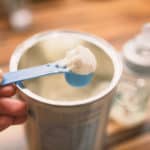



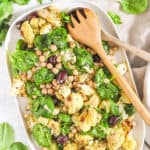



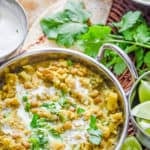




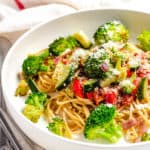



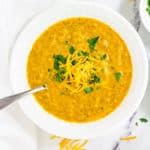



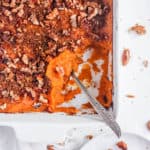

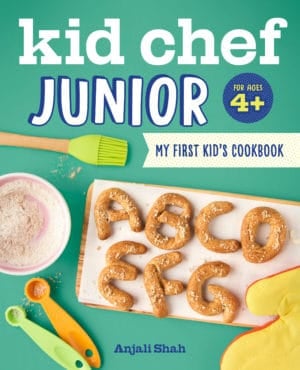






bobbies contains no taurine, an important amino acid…. almost all formulas including kendamil contain taurine
mothers breast milk contains a large amount of taurine as a baby produces none until it eats solid food such as egg,meat etc
taurine is suspected to be involved in fat digestion and retinal development….some studies say it taurine should be in all baby formulas
Hi Joyce! Bobbie formula does not contain taurine because the company chooses to follow a European-style formula approach, which typically excludes added taurine, believing that the benefits of including it are not well-established and may not outweigh potential risks, unlike many standard US formulas that add it to mimic breast milk composition more closely; essentially prioritizing a “less is more” philosophy when it comes to added ingredients. Hope that helps clarify!
Hi
I think that Kendamil is great but the issue with it is preparation that is long . I would need formula that can be ready withon 5 minutes while baby is hungry and Bobbies seems to be much quicker to prepare. Is there any alternative to quickly prepare Kandemil?
Hi Gosia! Why do you feel like Kendamil takes so long to prepare? When I mixed this formula when my kids were infants, it was pretty fast – took about 5 minutes. Let me know and maybe I can help you speed it up!
Thank you very much for a great explanation and details 🙏
It is very helpful!
So glad you found this helpful Hailey!
Thanks for this very informational post! My baby has been vomiting more frequently–every other day now. He eats majority expressed breastmilk, and 1 or 2 bottles/day of Kendamil. I was thinking of trying Bobbie, just to see if it helps with the vomiting. Do you think the nonfat milk in Bobbie (vs whole milk in Kendamil) or any other differences in ingredients could be a factor in causing vomiting?
Hi Christine! Thanks for reaching out and I’m so glad you found this post helpful! So sorry to hear that your baby has been vomiting more frequently. Have you talked to your pediatrician about whether they think your baby might have reflux? If it is reflux, then you might want to try an anti reflux formula (with your pediatrician’s approval) like HiPP AR vs. Bobbie or Kendamil. If your baby is having trouble digesting milk fats specifically, then the nonfat milk in Bobbie might help alleviate some of the reflux since Kendamil has more milk fats from the whole milk. But between the two formulas, they are pretty comparable, so it’s really just a matter of trial and error to see if your baby tolerates one better than the other! I hope that helps, let me know if you have any other questions!
How do these compare to Hipp bio combiotic infant formula?
Hi Taeler! HiPP Bio Combiotic is also a great formula option! I have a separate guide that actually ranks all of the formulas against each other which you can see here. I created a comparison chart within that guide here which should help as well.
Hi! You mention that Kendamil Organic includes canola oils but I don’t see it in the ingredients list. I prefer not to have canola oils in formula because I saw that it’s not the healthiest. Where can I find this information?
Hi Jesenia! On the ingredients list for Kendamil you will see “rapeseed oil” which is the same as canola oil. Canola is the genetically modified version of the rapeseed plant. You can see more info here. Hope that helps!
Can you please work in the prepared cost? The Bobbie formula is 1 scoop to 2 ounces of water vs Kendamil’s 1 scoop to 1 ounce. That’s half the cost per ounce for Bobbie Organic, once prepared. We’ve recently toyed with switching from Bobbie to Kendamil Organic until I realized the actual prepared cost. Also, for some reason, the Kendamil Organic wouldn’t disolve well unless I heated the water(an extra step that’s difficult to manage with cleaning bottles and all).
Thanks Julia! That totally makes sense! I added in how much each can makes so hopefully that should help clarify!
Love this!!! Thank you for so much info in one place. I know it’s fairly new, but what are your thoughts on how the two compare to Byheart?
Hi Lauren! No problem, I’m so glad you found it helpful! ByHeart is a great formula from what I can tell! But they are having major issues with availability right now, which is why I haven’t included them in this guide or any of my other formula guides so far. Once they open up their availability and people are actually able to purchase it I’ll likely be doing a separate post about it! But for your reference, here are a few ways ByHeart compares to Bobbie and Kendamil:
1) ByHeart uses organic whole milk (Bobbie uses organic nonfat milk, Kendamil uses organic whole milk)
2) ByHeart uses organic coconut oil (Bobbie uses organic soybean oil, Kendamil uses organic coconut oil)
3) ByHeart has prebiotics added (Bobbie has no prebiotics, Kendamil does have prebiotics)
4) ByHeart contains lactoferrin which is a protein found in breastmilk (Bobbie does not, Kendamil contains HMOs).
Hope that helps!
The EU recently banned the use of antibiotics in farm animals. So then that ideally will remove the concern of antibiotics in the Kendamil, correct?
Hi Lauren! Great question, so yes, the EU has banned the use of antibiotics – even for nonorganic farms, but there are concerns that enforcement and compliance will be spotty. Given that, I still highlight it in this post because there is a chance that the non-organic Kendamil formula will have this issue (the organic Kendamil formula obviously will not have an issue around antibiotics use). Hope that helps clarify!
This was great thank you so much! I switched from kendamil original to kendamil organic per my pediatrician and just learned about Bobbie. The only reason I’m looking elsewhere is because my baby is straining when I do more formula than bm. I’m nervous it’s the kendamil. I’m going to discuss with my pediatrician tomorrow but I’m wondering if there is anything in Bobbie vs kendamil that helps ease going to the restroom
Hi Deema! Bobbie and Kendamil are super similar in formulation when it comes to easing gas, constipation, etc. Kendamil does contain a prebiotic, which theoretically should improve constipation issues, but every baby is different and it could be possible that your baby doesn’t react well to prebiotics, in which case Bobbie would be easier to digest because Bobbie doesn’t contain pre or probiotics. I hope that helps!